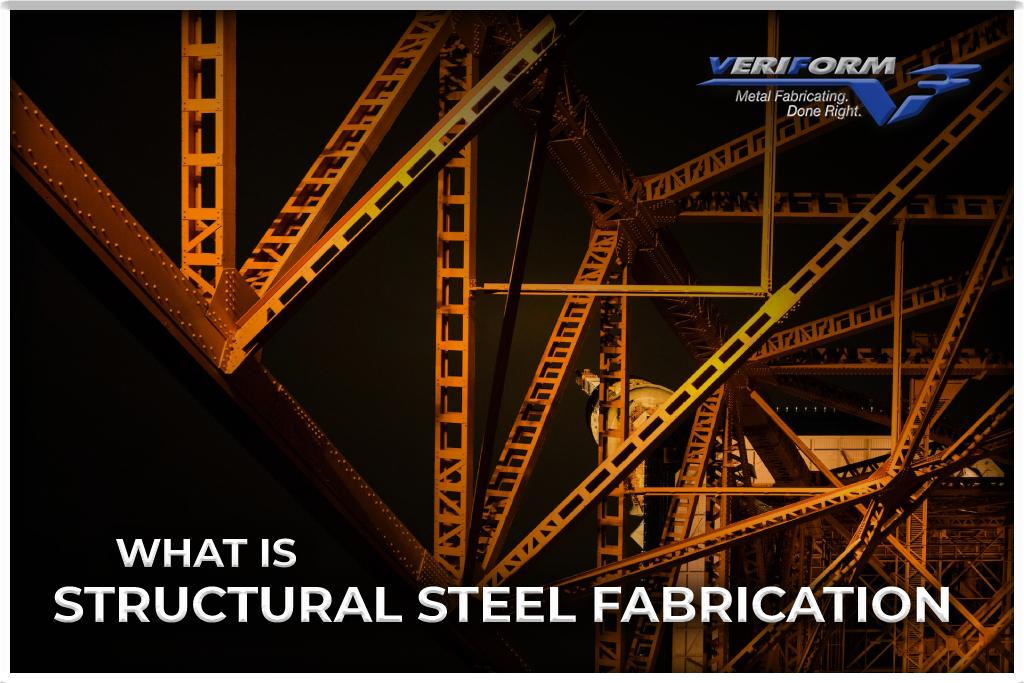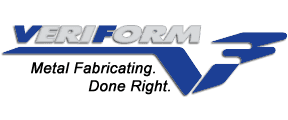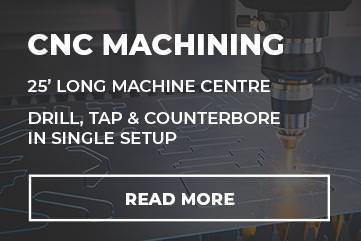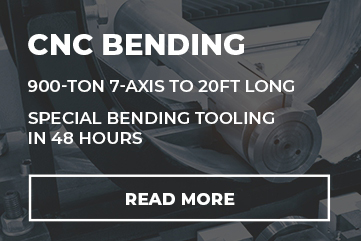News
What is Structural Steel Fabrication?

Structural steel fabrication is the process of cutting, bending, and shaping steel components for later use in steel structures like buildings, towers, and bridges. The various steps involved, which include the use of complex fabrication technologies, often call for equal measures of experience, skill, and artistry.
Structural steel fabricating is a specialty skill that requires experience in converting raw materials into products that meet applicable codes and standards. It is widely used in the following industries:
- Aerospace
- Automotive
- Construction
- Energy
- Manufacturing
- Mining
- Shipbuilding
At VeriForm Inc, our structural steel fabrication services are provided by highly skilled tradespeople and state-of-the-art equipment. In this article, we’ll explain what structural steel fabrication is, what it’s used for, and how a top-rated Ontario metal fabrication company can help you get quality results.
What is the Most Commonly Used Structural Steel?
Steel’s chemical composition and the treatments it undergoes can affect its hardness and ductility, making different types of steel suitable for specific applications. We’ll discuss the three main types of structural steel below.
Carbon Steel
For structural applications, carbon steel is a popular choice. As a matter of fact, it is the most commonly produced steel in North America. Carbon steel is both strong and ductile (it can bend into any shape without breaking), and it is also relatively easy to manufacture.
This structural steel is an alloy, which means that it’s mixed with other metals or non-metallic materials. The main constituents of carbon steel are iron and carbon, with a few other elements alloyed in very small amounts. It is made in a blast furnace by mixing iron with coke (an industrial fuel made from coal or oil). The steel is cast into a mold after undergoing additional processes such as deoxidation. After that, it can be rolled, cold-formed, or heated to create the exact steel you require.
Since carbon steel is so common, it can be used for a wide variety of purposes, from bridges and buildings to bolts and fasteners. Nonetheless, other forms of steel are also suitable for specific applications.
Tool Steel
Steel alloys become stronger and harder when they are quenched and tempered. The first step is to quench alloy steel. In other words, it is heated up to a critical temperature and then cooled down immediately. (To prevent brittle edges on the steel, this process must be tightly controlled.) Following quenching for extra toughness, the alloy will be tempered. In tempering, the metal is heated once more, but below its critical point. It is then air-cooled.
Alloy steel that has been quenched and tempered can be used for many things, including building bridges and skyscrapers. It is also used for making tools, which is why it is called tool steel.
HSLA Steel
The term HSLA refers to high-strength low-alloy steel. Elements like manganese, copper, nickel, zirconium, or more are added to steel to make it harder. Steel was originally designed for pipelines, but now you can find it in cars, cranes, and even roller coasters. Since HSLA has a good strength-to-weight ratio and can withstand a lot of stress, it is an ideal building material.
This steel also tends to be more corrosion-resistant than other kinds due to the particular elements alloyed into it. It is, however, more difficult to manufacture than carbon steel.
What Happens During Structural Steel Fabrication?
Structural steel fabrication is a multi-step process that starts with cutting and bending and usually progresses to welding and assembly.
Structural Steel Cutting
Fabricators cut structural steel using a variety of methods that include:
- Oxygen-Acetylene Flame Cutting: This technique is commonly used for general cutting or edge preparation, such as beveling, coping, or notching.
- Plasma Cutting: This mechanically-guided process is often used to cut steel plates up to one inch thick.
- Laser Cutting: Like plasma cutting, this process is useful for cutting steel plates.
- Water Jet Cutting: This manufacturing process uses high-pressure water jets to cut and shape various types of materials.
- Shearing: Performed with mechanical presses, shearing is generally useful for cutting plates and angles.
Structural Steel Bending or Rolling
The next step is to bend or roll the alloy. The process of rolling or bending structural steel involves curving it to a specified radius and arc length. The term bending generally refers to creating a bend with a tighter radius, while rolling describes a bend with a larger radius. Bent and rolled steel are often used in environments that require a curved aesthetic, such as domes, arenas, canopies, and roof trusses.
A steel fabricator can hammer steel manually or with a machine. Whether you should do one or the other depends on how much repetitive bending your project requires. Fabricators are more likely to use machinery if bending structural steel is highly repetitive.
Structural Steel Assembly
Combining the various steel parts is the next step in creating steel structures. Although some structures call for the pieces of steel to be joined using rivets, welding is the most commonly used option. This is because welding can make the steel stronger, preparing it for high-pressure applications like I-beams or columns. Compared to riveting, welding gives structures greater strength and durability.
Cleaning and Painting
The last step of the process is to clean the structure surface of any debris. The surface is prepared for painting by using a variety of cleaning methods, such as surface rusting, blasting, etc. Generally, steel structures are painted with two layers of normal paint and one layer of anti-rust paint, which protects against corrosion caused by environmental factors.
VeriForm Inc.: Your Structural Steel Fabricating Experts
Whether you work in the construction industry or the manufacturing industry, a quality structural steel fabrication process is essential for the best results. VeriForm Inc. provides expert welding services on all your fabrication projects, with any oversized or complex parts being welded on Demmeler Bluco fabrication tables for extra accuracy. If you need help with an upcoming structural steel fabrication project, we’ll be pleased to offer a competitive quote. Learn more by visiting our website, calling 519-653-6000 or contacting us online.








